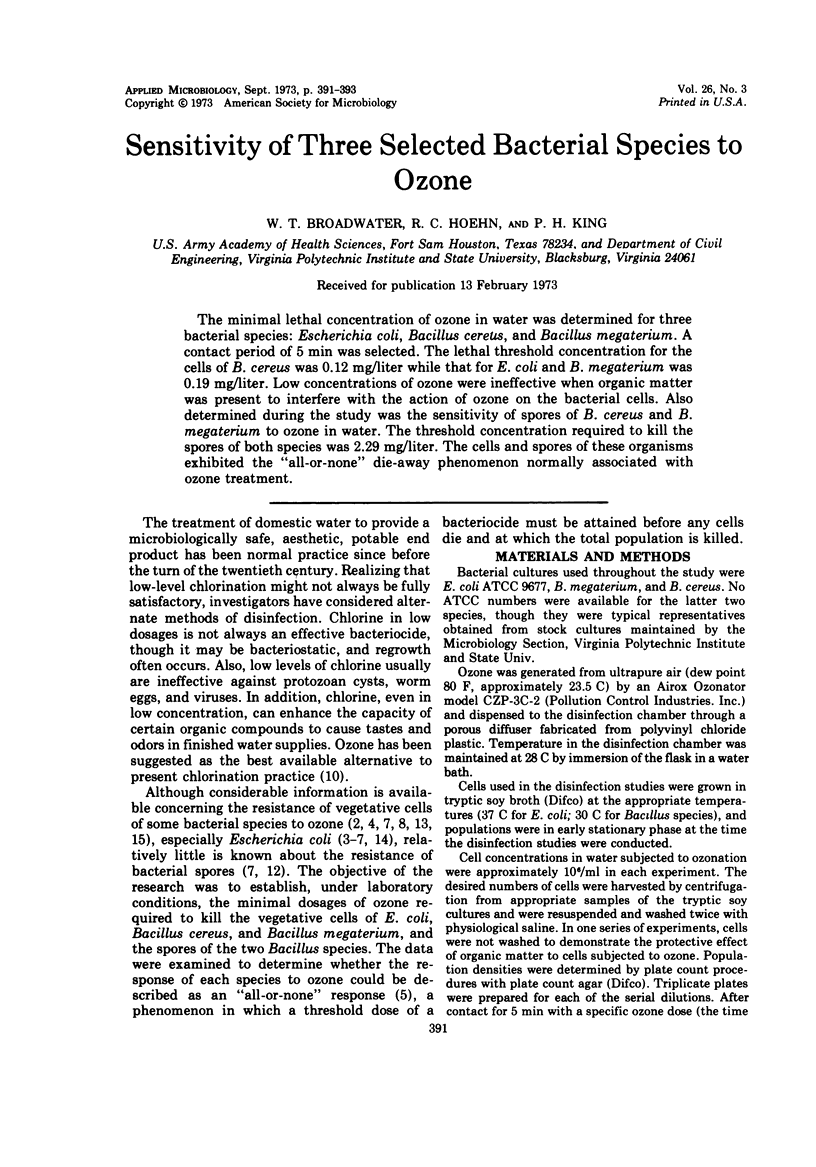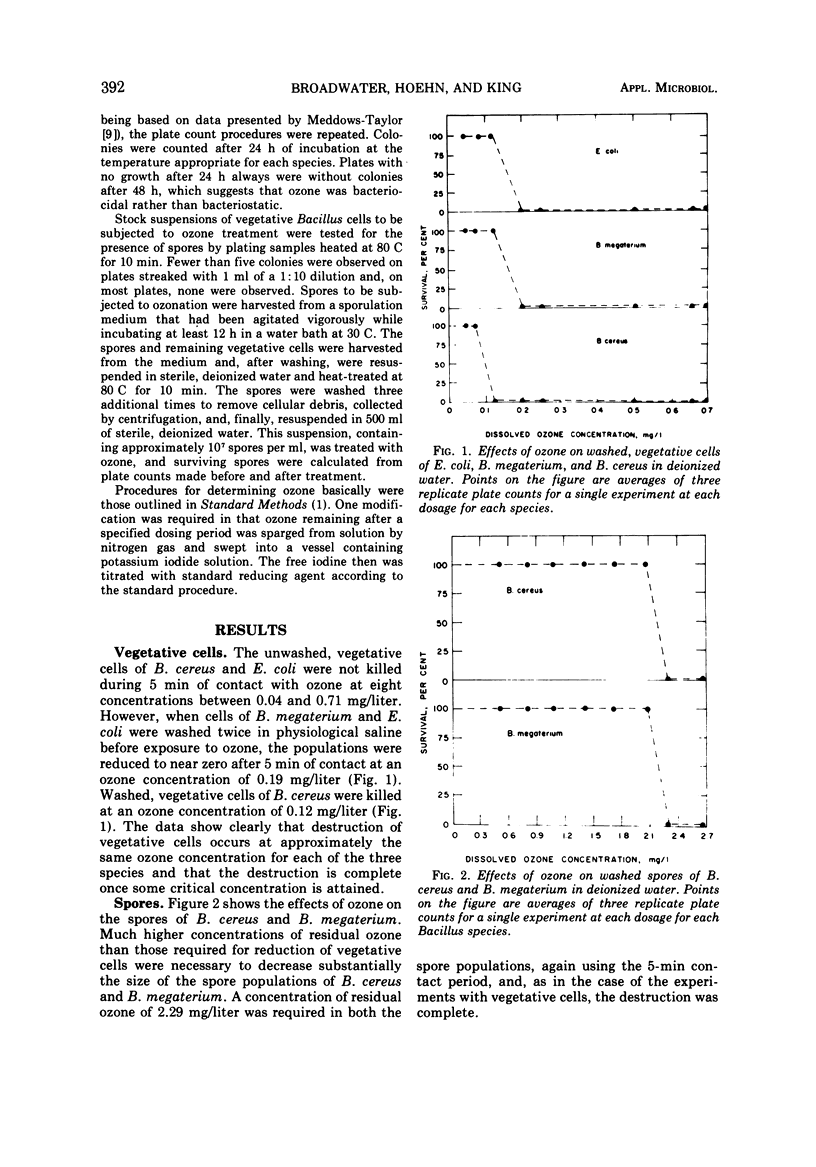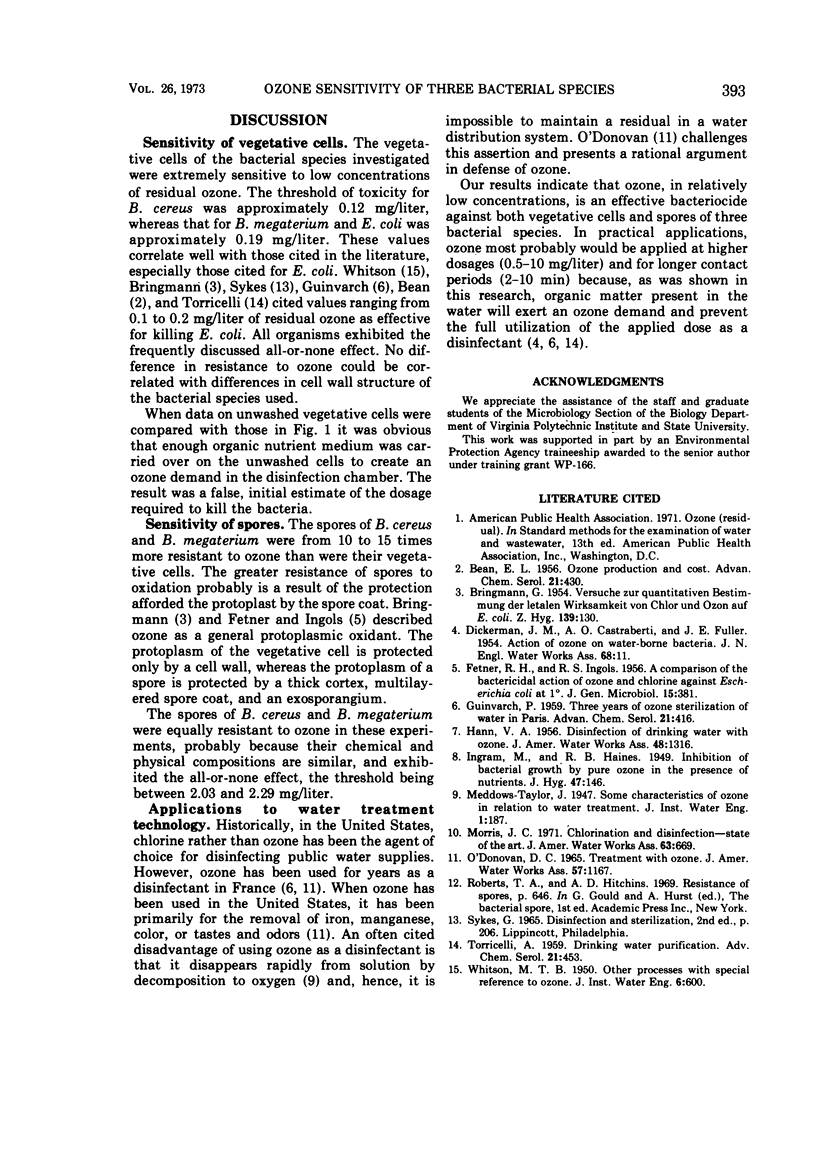Abstract
The minimal lethal concentration of ozone in water was determined for three bacterial species: Escherichia coli, Bacillus cereus, and Bacillus megaterium. A contact period of 5 min was selected. The lethal threshold concentration for the cells of B. cereus was 0.12 mg/liter while that for E. coli and B. megaterium was 0.19 mg/liter. Low concentrations of ozone were ineffective when organic matter was present to interfere with the action of ozone on the bacterial cells. Also determined during the study was the sensitivity of spores of B. cereus and B. megaterium to ozone in water. The threshold concentration required to kill the spores of both species was 2.29 mg/liter. The cells and spores of these organisms exhibited the „all-or-none” die-away phenomenon normally associated with ozone treatment.
Full text
PDF


Selected References
These references are in PubMed. This may not be the complete list of references from this article.
- BRINGMANN G. Versuche zur quantitativen Bestimmung der letalen Wirksamkeit von Chlor und Ozon auf E. coli. Z Hyg Infektionskr. 1954;139(2):130–139. [PubMed] [Google Scholar]
- FETNER R. H., INGOLS R. S. A comparison of the bactericidal activity of ozone and chlorine against Escherichia coli at 1degree. J Gen Microbiol. 1956 Oct;15(2):381–385. doi: 10.1099/00221287-15-2-381. [DOI] [PubMed] [Google Scholar]
- INGRAM M., HAINES R. B. Inhibition of bacterial growth by pure ozone in the presence of nutrients. J Hyg (Lond) 1949 Jun;47(2):146-58, tab. doi: 10.1017/s0022172400014406. [DOI] [PMC free article] [PubMed] [Google Scholar]


